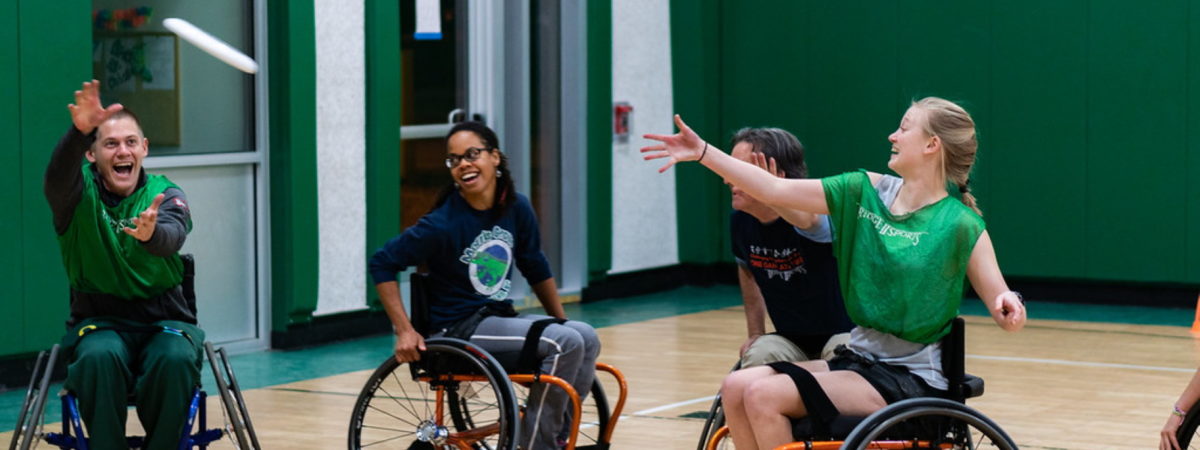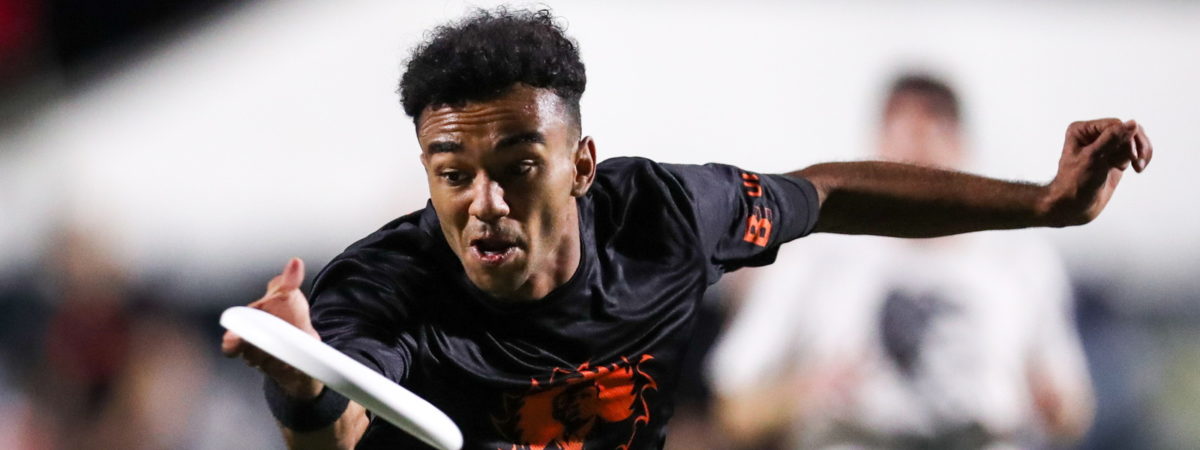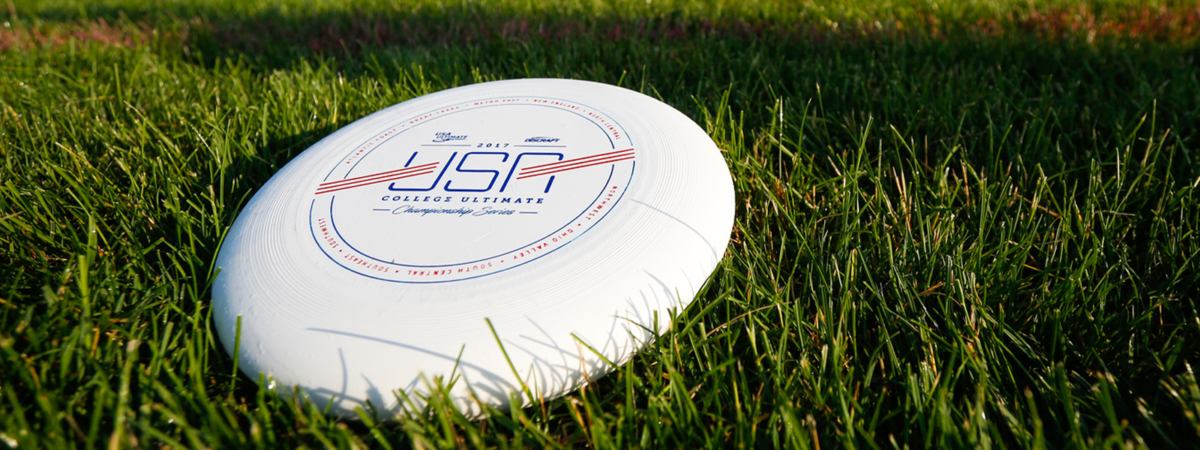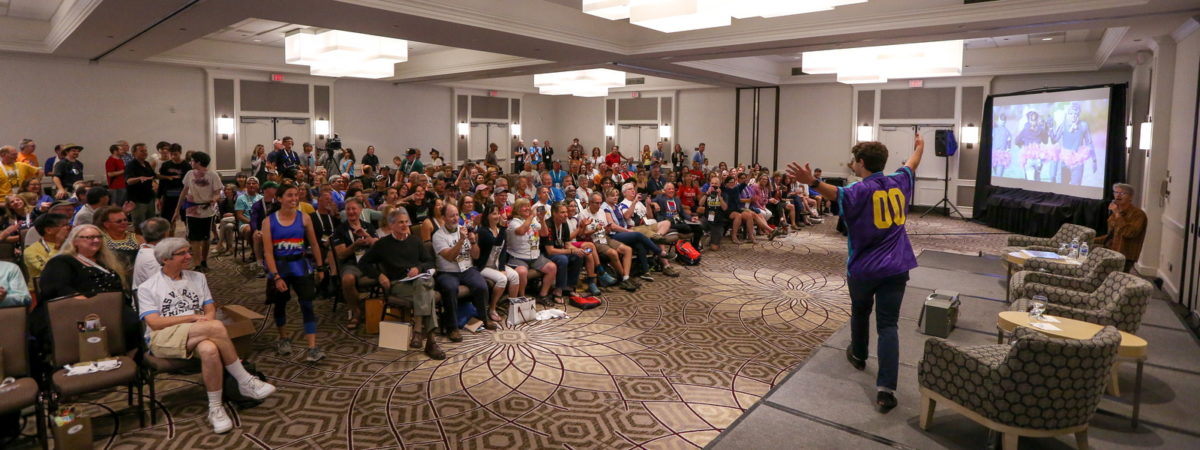Read about how our North Carolina affiliate launched an adapted ultimate program for people with disabilities, and how their efforts inspired the development of another program across the country.
“It was pretty cool to have that super diverse mix of ultimate players that, once everybody’s in wheelchairs, it’s hard for everybody so everybody’s kind of learning.”
Wheelchairs in ultimate? How? Tristan Green from Triangle Ultimate may have found the answer: adapted ultimate.
“It really ties into a bigger direction that we’ve been going,” explained Tristan. “The biggest focus of our community investment now is community partnerships. [Adapted ultimate] completely fits within the vision.”

Photo: Tristan Green
In the summer of 2017, Triangle Ultimate, a USA Ultimate affiliate organization based in the Triangle area of North Carolina, launched their Community Investment Initiative focused on three key areas: scholarships, volunteer/coaching development and community partnerships. With community partnerships being the primary focus, Tristan felt the organization needed to directly engage new communities and organizations if they were actually going to serve them.
“Our vision as an organization is to build community through the sport of ultimate in the Triangle,” said Tristan. “We are trying to build a community that represents the Triangle, and we acknowledge and know that the current demographics of the ultimate community in the Triangle do not represent the demographics of the Triangle region as a whole.”
With representation being the underlying inspiration behind this direction, Tristan immediately thought of engaging people from different gender, racial and socioeconomic backgrounds. One demographic he admits he hadn’t previously considered was the people with disabilities community.
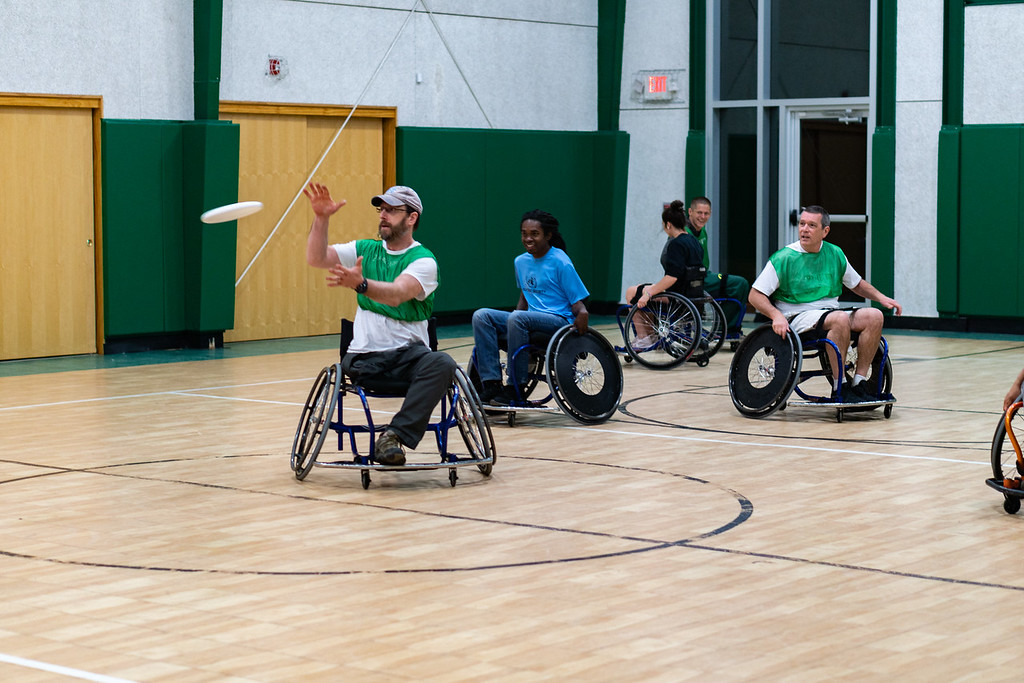
While working out of a shared coworking space, Tristan met a board member from Bridge II Sports, a local adapted sports organization. He immediately recalled seeing a video on YouTube of a college in New Hampshire doing adapted ultimate as part of their intramurals program.
“I remember seeing that video…and when he said he was on the board of this adapted sports organization…I was like, ‘How cool would it be to work together and do adapted ultimate?’”
After a few phone calls and meetings later, along with financial support from USA Ultimate and wheelchairs from Bridge II Sports, Triangle’s Adapted Ultimate program was born.
Fifteen participants came out to participate in the first clinic. After going through a basic overview and learning how to maneuver by playing Sharks and Minnows, the group was excited to start throwing!
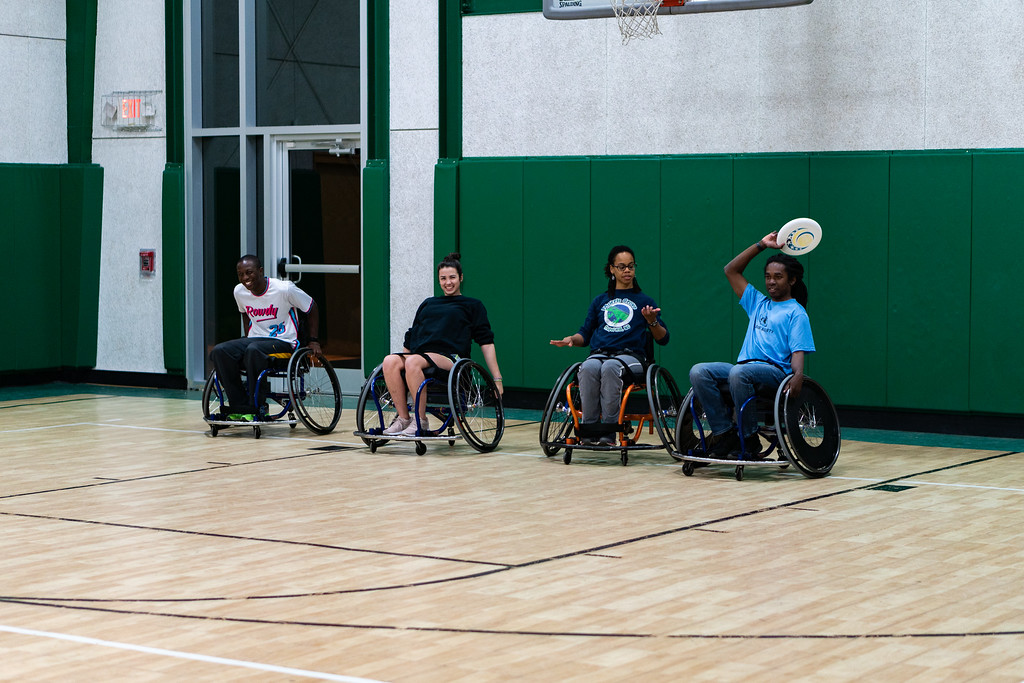
“It wasn’t too hard to catch on, [but] it’s super tiring to start,” commented Tristan.
A mental block newcomers had to overcome was the fear of tipping over. The wheelchairs used were ones made for wheelchair basketball, so they had a fifth wheel in the back preventing the wheelchair from tipping. There were also straps over participants’ waists and knees to protect them whenever they leaned over to make a throw or make a D, or when they ran into someone.
Additionally, players had to adapt to controlling their speed using the wheels and accounting for the walls of an enclosed gym, as compared to slowing down or speeding up using their feet and playing on a spacious field.
“As you’re rolling down the court, when do you push the wheels to gain more momentum or are you trying to concentrate on catching the disc?”
The participants included able-bodied players from the Triangle community and Bridge II Sports staff members, and all of them had amazing experiences and have spread the word to their friends as well. It was also exciting to see the variety of skill levels in attendance.
“I think we had two great grand masters players, four or five youth players, two or three rec players and two players (like myself) who were national level club players,” listed Tristan. Even Triangle Ultimate’s board president, Tom Munoz, came out to represent the great grand masters players.
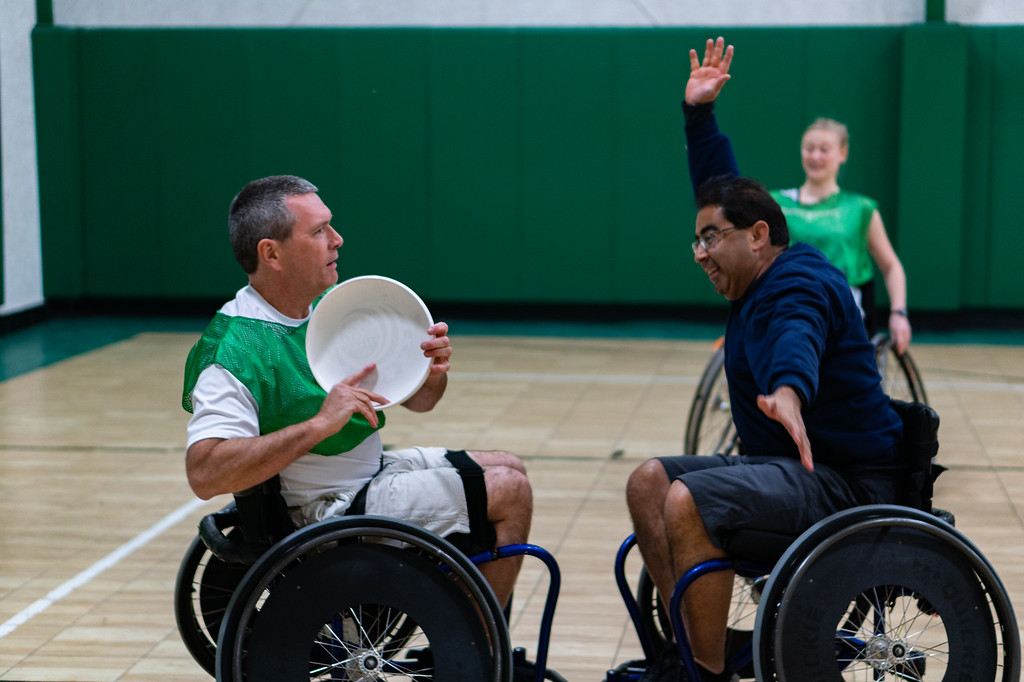
In fact, out of all of the experienced ultimate players who participated, the person who excelled the best was a Bridge II Sports staffer who was an amputee and had never played ultimate before in his life.
“That was kind of cool to see where he had never thrown a Frisbee before. He was getting his throws down but he was definitely the most impactful player on the court because he knew how to get around.”
The environment at the clinic was very positive as participants focused more on the joy of the game, a focus Tristan believes is the theme of Bridge II Sports’s mantra, “Find the Player Within.”
“Everyone’s always laughing and there’s a lot of joy of the game, because it’s hard to get lost in competition when you’re focused on being able to move around and play and learn the new sport,” explained Tristan. “You can’t really get mad at anybody when you’re playing or making a mistake…because everyone’s making mistakes.”
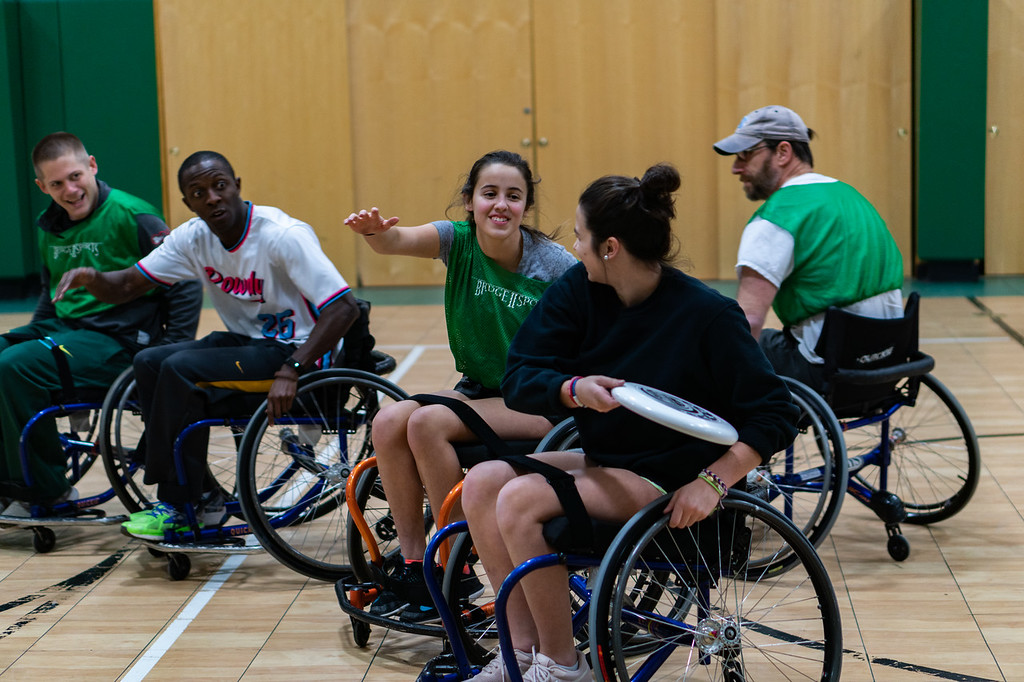
The first clinic did present a few challenges for Triangle Ultimate to consider. Although there was initial success in raising awareness of adapted sports through this program, Tristan and Bridge II Sports found difficulty in actually engaging with and bringing out athletes and participants from the people with disabilities community to the clinic.
“We haven’t succeeded in engaging the Bridge II Sports athletes yet,” said Tristan. “I think they have a pretty regular schedule of their existing programming.”
Triangle Ultimate also had to rely on the reach of their community and connections with the clinic participants in trying to make this program a more visible opportunity for people with disabilities. However, Tristan believes some hesitation could be due to people not knowing exactly what the program is and who it’s for.
“Do they need to bring their own wheelchair? Is it just for people with disabilities? That’s one of the barriers we have to get over.”
Despite these setbacks, playing adapted ultimate has been a very useful teaching tool for able-bodied ultimate players, specifically about the importance of positioning.
“If you’re in front of somebody, they can’t reach around you because they’re strapped into their wheelchair,” described Tristan. “It’s different than ultimate in the fact that there is contact, but it’s trying to figure out how to move your body around so that you have that advantageous positioning rather than the defender, or vice versa.”
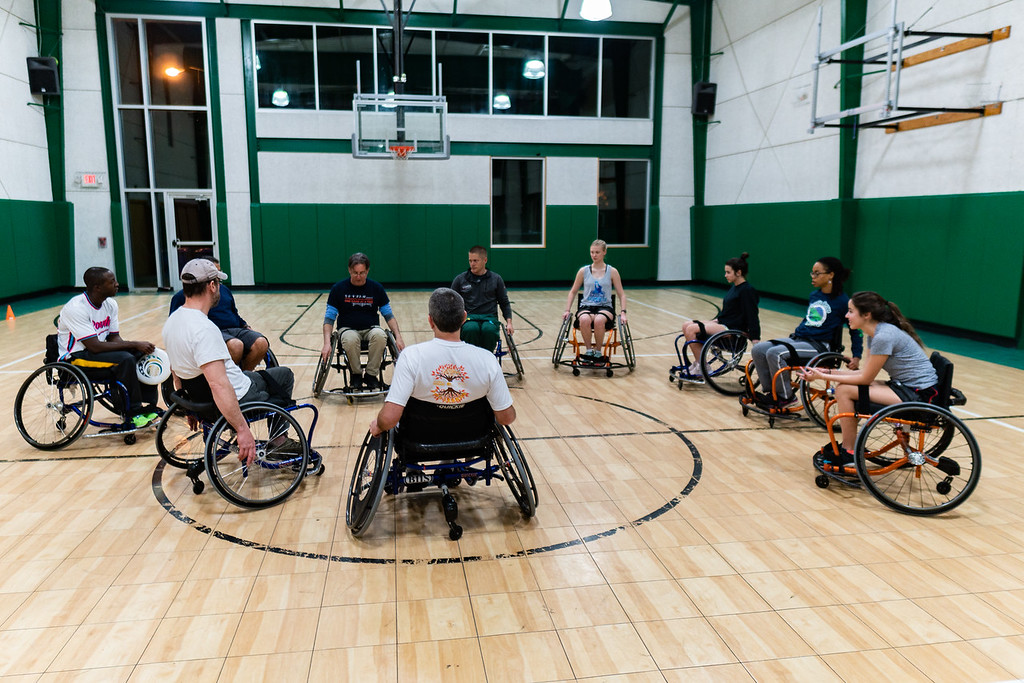
After evaluating the success and challenges the first clinic raised, Triangle Ultimate decided to move back and analyze how to better engage with and be a regular and consistent presence to the people with disabilities community before pursuing the program further. However, Tristan remains optimistic about the impact and growth adapted ultimate can bring to all communities involved.
“Having the ability to have it [the clinics] be a mix of able-bodied players that are coming from our community and people with disabilities, that’s definitely the ultimate goal,” explained Tristan. “It’s something where everyone is able to be on the same level playing field and everybody’s getting to experience that together.”
Although Triangle Ultimate has moved back on this initiative, their efforts have inspired California Ultimate, one of our state-based organizations, to pick up where they left off. Tristan has been working closely with Grant Boyd, the executive director and founder of California Ultimate, on providing resources and support in helping launch an adapted ultimate program on the west coast.
We can’t wait to see what develops in California with this project in 2020!
